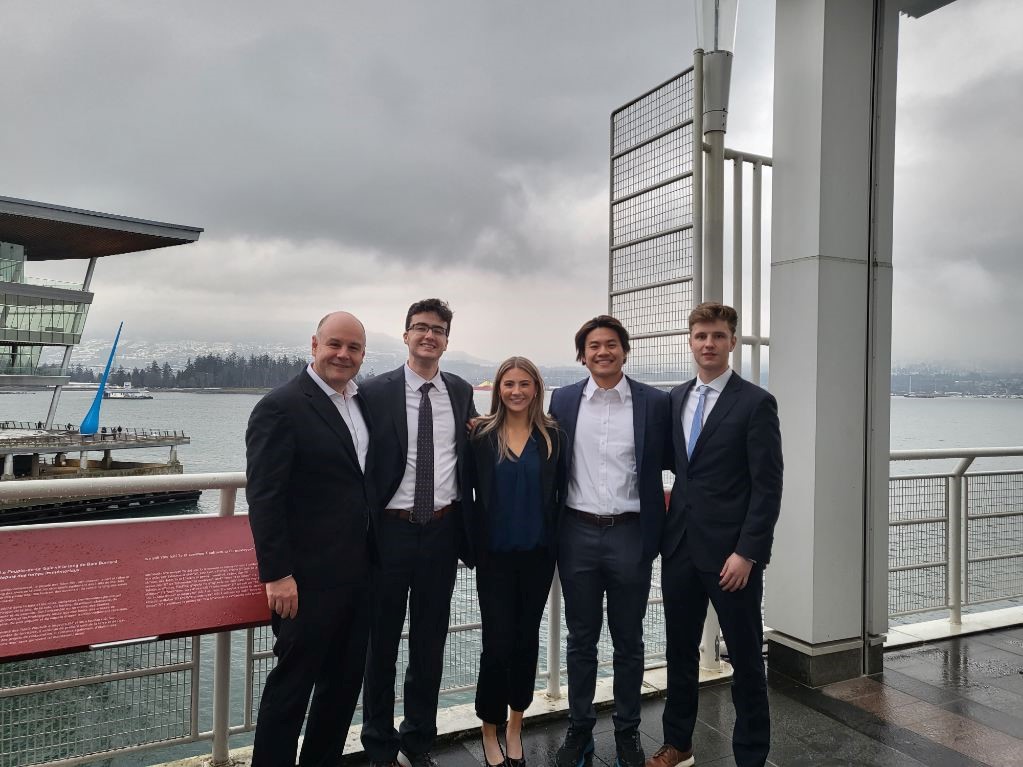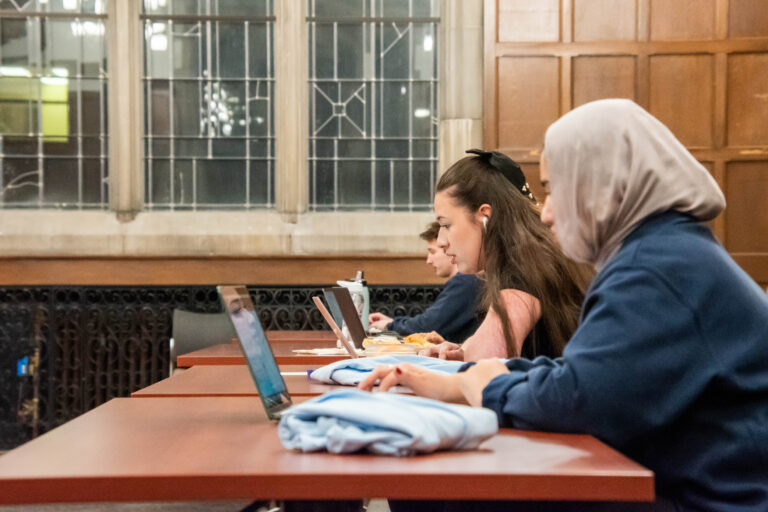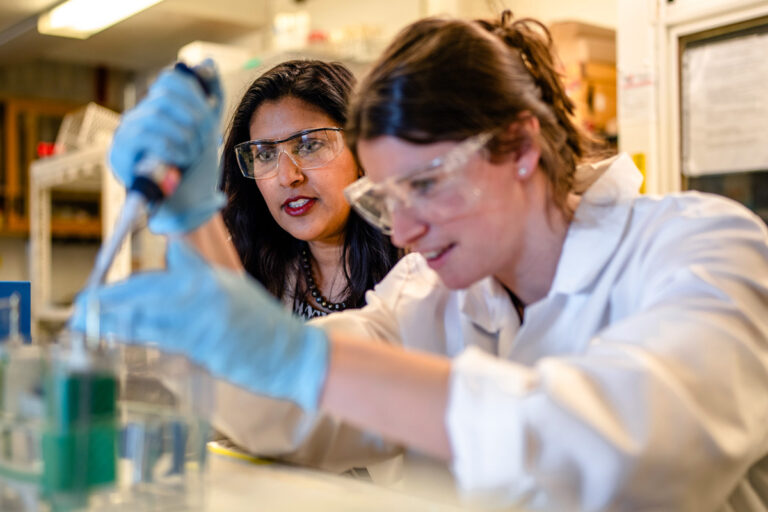The news hit all four students’ inboxes simultaneously on December 20, just two days after Winter Break started.
Dentalcorp, a network of Canadian dental practices, had become a target for corporate acquisition. Charlielu Hua, Ella Coulter, Bennett Barr and Christian Gambotz snapped into action, constructing financial models to advise senior analysts about the multimillion-dollar decision of whether to buy the company or not.
“I don’t think any of us ate while we were working, maybe just a little snack,” Hua says. “We just wanted to get it done.”
Even though Dentalcorp was not actually for sale, the stakes could not have been higher for the four students, all of whom are in the AIM program, which stands for Accelerating Ingenuity in Markets. The Dentalcorp case was a simulation for the National Investment Banking Competition (NIBC), a global pitch contest in which only 48 teams out of several hundred would reach the final round in Vancouver, Canada.
“Our AIM students never cease to amaze me with how much they’re able to do,” says Dr. Joseph Wall, the program’s executive director. “We put these college kids in the same kind of high-pressure scenarios that real analysts are expected to navigate, and they performed as well as I could have hoped. It’s a real testament to the quality and work ethic of our students.”
Marquette’s AIM program started in 2004 with just 12 students and has grown every year since. These budding financiers are given part of the university’s endowment fund to invest and have consistently outperformed the market; they now manage roughly $3 million.
In addition to their investment duties, students like Gambotz, Coulter, Hua and Barr can also compete against other schools in competitions like the NIBC. The four students worked with each other over Microsoft Teams, spending an hour or two per day together straight through the holidays. Each of them also decided to cut their respective breaks short by a week to return to campus and finish work on the case in-person, which made them the first people to use O’Brien Hall’s new AIM laboratory.
“Once we came back to school that week, we were in the AIM room for maybe 50 or 60 hours,” Coulter says.
Most of that time went to synthesizing the modeling work the students did virtually into a group presentation that needed to meet stringent standards.
“We built out a pitch deck, which is basically just a really long, fancy PowerPoint, and it took ages,” Gambotz says. “We had to condense a 30-slide PowerPoint into six or seven minutes of presentation. It was a solid month of work.”
Although all four students are interested in finance careers after graduation, not all of them came to Marquette reading the stock ticker every day. Coulter was a business major, but “didn’t really see (herself) as a finance girl.” Hua initially planned on being a physician assistant and only changed course when he got into trading stocks as a hobby. That led to curiosity about AIM.
“The more I talked to people about the AIM program, the more I got interested in it and the more I wanted to learn about it,” Hua says.
Others, like Barr, came to Marquette specifically because of AIM.
“It’s a really unique program from the standpoint of applied learning,” Barr says. “When I was comparing Marquette to other institutions, that really stood out to me. AIM prepares you so well for the careers you might look to get into, particularly for me with investment banking.”
Once in AIM, the students benefited from the guidance of its award-winning personnel. Dr. James Valentine, the program’s director, had previously worked as the director of training for Morgan Stanley’s global research department and was among the top equity research analysts in the country. Valentine was also DePaul’s executive director of behavioral finance immediately prior to coming to Marquette.
Wall also has deep industry experience; he spent more than 20 years on Wall Street and founded his own securities investment firm, Ideas in Motion LLC, which consistently outperformed the market.
All four students quickly found that they could count on Wall’s support, no matter the situation.
“When we would have any questions about company valuations or anything else, we would give him a text or a call and he was ready 24/7,” Hua says. “You can text him at three in the morning and he’ll respond. He always puts the students first. He loves us and we love him.”
“He was an excellent mentor for all of us because he has a lot of experience in the finance realm, specifically in the hedge fund space. We really appreciated that guidance,” Barr says.
That guidance, combined with the students’ efforts, was enough to gain them entrance into the final round of the NIBC in Vancouver, Canada. After getting in at midnight, the students had just five hours to sleep before they were presented with an updated prompt that required major revisions to the pitch deck. Their efforts culminated in an in-person presentation that afternoon — not to a video camera, but to financial analysts and managing directors at large firms.
“The judges were experts in this specific field, so the level of professionalism was something to take away from it,” Barr says. “This was something that you’d do in a real business meeting, so simulating that environment and the nerves that went along with it was great to experience as an undergraduate.”
Everyone that went to Vancouver also got to experience something else: the opportunity to network with business students from across the globe.
“There were a lot of people from Canadian universities and international ones, so we were able to talk with a lot of like-minded individuals,” Barr says.
With a proven track record of success and brand-new facilities now operational, the AIM program will seek to build upon the already-impressive achievements of its current students.
“There’s no limit to where we can go from here,” Wall says.



